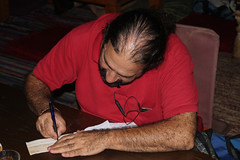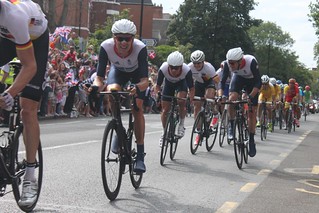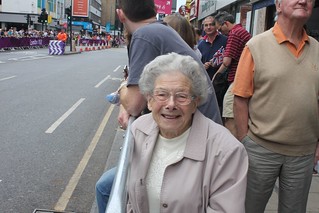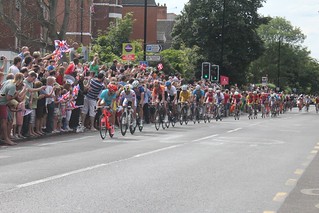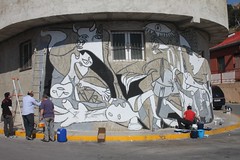A pause for thought, and more
by Davi Windholz
by Davi Windholz
Nahariya, Israel
translated from the Portuguese original by Micalet
As an activist of the left in the areas of both politics and education, I am regularly in contact with Israeli Arabs and with Palestinians. As a Zionist activist I am regularly in contact with Olim - Jewish immigrants to Israel - whose stance is often opposed to mine. As a social activist I am regularly in contact with people from the lower levels of Israeli society, who are mostly Sephardic Jews originating from Arab countries.
We have had 100 years of conflict, and at the moment it does not matter who is the guilty party or why. Neither is it of any relevance whether this Land belongs to the Jewish people, who ruled over it for a thousand years and created two independent States, and were parted from it for two thousand years, or to the Palestinians who have lived here for the past 600 years. Two peoples, two narratives of history, of pain and of suffering, of definitions of ‘Good’ and of ‘Evil’. These two opposed narratives are in total conflict, the only things they have in common being their simplicity, their misrepresentation of facts, and their lack of profound analysis, all borne along by demagogy and propaganda.
A hundred years of War, two narratives, Israeli and Palestinian. Two narratives which only serve to teach people to hate more, which only provoke more alienation from reality, and allow the political, economic and religious elites to seize the opportunity to continue their dominance. Narratives of hatred and prejudice, with their own definitions of justice.
These two narratives give rise to two others - that of the Jewish Diaspora, blindly defending the Israeli narrative, and that of the Left, blindly defending the Palestinian and Arab narrative, and contaminated with a double dose of anti-semitism. How otherwise can we describe the attitude of Jewish communities in the face of the constant and murderous violence perpetrated by Israel through 45 years of domination over the Palestinian people? And how otherwise can we describe the attitude of the Left, who say nothing about the murder of more than 25000 civilains in Syria, or the attacks and assassinations carried out by Palestinians against civilians in Israel, or the prehistoric attitude of Hamas towards women?
We can continue with these four narratives, at local level and world-wide, and carry on generating hatred and destruction, and the murder of children, women, men and the elderly. We can swear on the Torah and on the Koran that this Land “belongs to us and only us”.
These vengeful and violent attitudes come from darkness, from the Middle Ages, from ignorance. We can stay in the darkness cast by the Holocaust and continue to justify our actions with “Never again”. We can stay in the darkness of the Nakba (the expulsion of the Palestinians in the War of 1948), and continue to justify our hatred of the Zionists. We can continue being victims of history and carry on in the darkness of the Middle Ages. We can continue in our ignorance, hating without knowing why.
After a hundred years we all need Peace, we are all in danger, not only physical but also emotional and spiritual, and only a critical consciousness, achieved by re-educating ourselves, can change this situation.
A hundred years of War, and we have never given a chance to Peace. Peace is an internal state of belief, of disconnecting yourself from anger and hatred. Now is the time to wake up and understand that we are all connected one with another, for all time. We are each a part of each other, and the soldiers of the future are our children. And the dead of the future are our children. But, our children are also our Peace.
The only solution is to persuade ourselves and those around us that there is no absolute ‘Good’ or ‘Evil’. There are no soldiers, no terrorists. Any soldier that dies, Israeli or Palestinian, is equally a child of someone, irrespective of who is his mother or father. The demonstration of grief and of false pride through ‘Shahid’ (‘martyrdom’ in Arabic), or via the heroes of Yad laBanim (association of the families of fallen Israeli soldiers) is simply a cultural way of dealing with, and glorifying, death, instead of living life.
The only way is to make a peace agreement, in which the first item would be 100 pages dedicated to re-educating ourselves to life, to critical consciousness and to the love of life.
We are in a new pause, a truce. We have to take advantage of it to reflect, to recover our physical, emotional and spiritual strength. I ask all of you, my friends, and those who receive this message as it is passed on, if we wish to influence what is going on here, in Israel, in Palestine, in the Middle East, we need to reflect, be critical, leave behind the stereotypical narrative. We should criticise the Israeli government, the Palestinian authorities, Hamas, Syria. We should demand a permanent cease-fire. We should cry out against barbarity, of all sides and against all sides. We should no longer accept one-sided narratives, we should not criticise “enemy” narratives just for the sake of criticising. Let us read, study, question, analyse, and open our eyes and see the cruel reality of both sides.
I ask all of you to open your hearts, to bring opposites together, against the tyranny of power, of hatred and of death. We have to put an end to this madness, before one more child is killed.
NB: Davi organised all the cultural events for our 'Merkavah' trip to Israel in 2009. You can read about the trip on our Merkavah site, and see the photos in this Collection. Davi is originally from Brazil, and has lived, studied and worked for many years in Israel; you can find him on Facebook.
